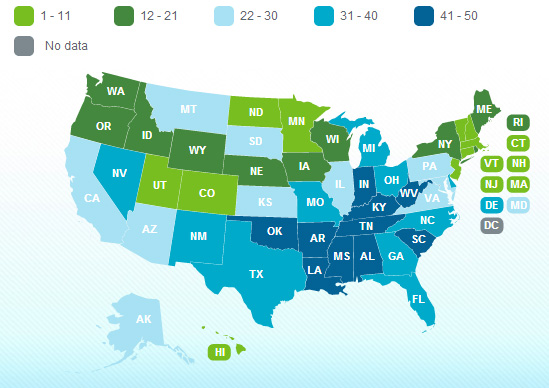For those still interested in walking around, it doesn’t take long to figure out that we’re an obese group of humans. It’s good for the motorized chair industry but there’s no net benefit to society.
The Centers for Disease Control reports that in the last 30 years, the number of obese kids has doubled. A third of all children and adolescents is obese. Seventy percent of all kids already have one risk factor for heart disease.
We like to think of our generation as smarter than those who went before, but we dump junk down the throats of our kids, spurred on by the marketing of food companies.
Why? The Star Tribune suggests today you only need to follow the money. In its story about Minnesota congressman John Kline’s attempt to roll back new school lunch standards, requiring more fruit, vegetables and whole grains, this paragraph is worth noting:
The increasing infighting comes even as Minnesota has actually become one of the best states for implementation of the new rules so far. Some 93 percent of the state’s schools are in compliance so far with the new standards, according to the USDA. Despite this, some of the state’s largest food companies, including General Mills and Schwan’s, are challenging the new standards through interest groups and campaign contributions on Capitol Hill.
“It’s a very, very big overreach of the federal government,” Kline said. “Being in compliance doesn’t necessarily mean everything is going well.”
Everything has to go well? Apparently, kids don’t want veggies and fruits and the some school lunch officials said participation in the school lunch program declined.
As for Kline, who didn’t offer any alternative in the article, he says the linking to campaign contributions is unfair.
Early on in 2011 comments to the USDA, General Mills weighed in against certain portion size restrictions and asked for a delay in mandatory implementation. The company’s Political Action Committee and employees have donated about $75,000 since 1997 to Kline, according to the Center for Responsive Politics.
“I think we need to have a little more confidence and trust in the states and districts,” Kline said.
That’s how we got Mississippi, the fattest, least healthy, least educated state in the nation. In fact, the “freedom to” states tend to be the drain on obesity and health. Check this graphic from the Wall St. Journal.
Now compare to state rankings on diabetes.

And the overall health ranking.

Brenda Braulick, Minnesota’s branch president of the School Nutrition Association, tells the Star Tribune that she sees food waste every day from the kids in Sartell-St. Stephen School District.
“What we’re seeing is a lot of whole fruit, whole apples, whole bananas, not even with a bite taken out. To force a kid to take it doesn’t do any good if we’re feeding the pigs well.”
What’s the alternative? Nobody seems to to have offered one, although a food service official in Minneapolis says they don’t see much waste because they cut up the fruit in wedges. That takes effort. Not our strong suit in America.
Wayzata has pulled out of the program. It’s a rich district and can afford to ignore the federal money.
A district near Chicago dropped the program, too, because it didn’t think its food offerings could compete with its more popular pizza choice, or the junk food shops located near the schools in Arlington Heights.
It’s the same story in Waterford, Wisconsin, where students rebelled and the school board objected to the feds getting involved.
“The taste has gotten a lot worse and the portions have gotten a lot smaller,” junior D.J. McGilvary told the Racine Journal. “The pizza my freshman year tasted good, and now it tastes like cardboard. And nachos — there’s a lot less chips than there used to be.”
“It’s not like we’re serving them pure sugar,” the school superintendent said. “It’s probably no different than you’re serving your kid at home.”
Perhaps that’s the problem.

